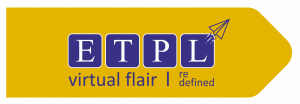Running a school isn’t just about classrooms and chalkboards anymore. From managing admissions and attendance to handling fees and transport, the administrative workload can be overwhelming. That’s where Education ERP Software steps in. But the big question is: can it really replace all that manual admin work in schools?
The Shift from Paper to Digital: Why It’s Happening
Traditionally, school admins have relied on physical registers, spreadsheets, and repetitive tasks to keep operations running. However, with digital transformation sweeping through every sector, educational institutions are now turning to Education ERP Software to simplify their processes.
Make school admin work easy and fast—try our Education ERP Software today!
This change isn’t just about convenience—it’s about survival. The time spent on routine admin tasks can be better used for strategic planning and student engagement. By automating processes, schools can reduce human error, save time, and make data-driven decisions.
What Does Education ERP Software Actually Do?
To understand its impact, let’s break down what a typical Education ERP Software offers:
Student Information Management:
Education ERP Software centralizes all student-related data—including personal details, academic records, admission status, health records, and disciplinary notes—into a single, secure digital system. This makes it easy for administrators and teachers to access updated student information instantly, reducing errors and eliminating the need to search through paper files or scattered spreadsheets.
Fee Management:
Managing school fees manually can be chaotic and time-consuming. ERP systems automate the entire fee process—from generating invoices and sending reminders to processing payments and issuing receipts. Parents can pay online, and finance teams get real-time tracking and reconciliation of dues, minimizing human errors and revenue leakage.
Timetable and Attendance:
Creating timetables manually for multiple classes and teachers is complex and error-prone. With ERP software, timetables are automatically generated based on availability, subject requirements, and staff preferences. Additionally, attendance can be recorded digitally (even via biometric or RFID systems), and reports can be generated instantly to track trends or irregularities.
Learn More: The Role of School ERP software in Managing Student Internships and Placements.
Exam Management:
From setting up exam schedules to grading and publishing report cards, the ERP software simplifies it all. Teachers can enter marks directly into the system, and students and parents can view results online. It also supports grading patterns, performance analytics, and report customization, saving hours of manual paperwork for teachers.
HR and Payroll:
Managing staff records, tracking leave balances, calculating salaries, and processing payroll become seamless with an ERP solution. It ensures compliance with tax rules, automates payslip generation, and integrates with biometric systems for accurate attendance-based payroll processing—eliminating the need for repetitive HR tasks.
Parent-Teacher Communication:
Education ERP platforms often include a communication portal or mobile app that sends instant notifications, announcements, and updates to parents. Whether it’s about attendance, fee dues, exam results, or school events, the system ensures parents stay informed and engaged without relying solely on physical meetings or printed notices.
Replacing Manual Work: The Reality
Let’s be realistic schools are complex ecosystems. While Education ERP Software can’t completely eliminate human involvement, it can drastically reduce repetitive, error-prone tasks.
For instance, instead of manually entering attendance for each class daily, teachers can do it in seconds using a mobile app. Admins no longer need to calculate staff payroll manually at the end of each month—the system does it for them. These time savings add up significantly.
Moreover, because everything is digital, data can be accessed instantly and shared securely. This real-time visibility empowers school leaders to make faster, smarter decisions.
Challenges You Should Know
Even with all the benefits, implementing Education ERP Software comes with its share of challenges:
Initial Setup:
Transitioning from traditional, paper-based processes to a digital ERP system is not instant. It involves migrating vast amounts of data, configuring modules to suit institutional workflows, and ensuring all stakeholders understand how to use the new system. This phase can take weeks or even months depending on the size of the institution. Moreover, a well-planned implementation roadmap and phased rollout are essential to avoid confusion and downtime during the shift.
Resistance to Change:
Not all staff members may be tech-savvy or open to changing long-established processes. Teachers and administrative personnel might feel overwhelmed by the new digital tools, fearing that it will add complexity to their work. This resistance can slow down adoption and impact system effectiveness. Regular training sessions, hands-on support, and involving staff in the onboarding process can ease this transition and build confidence.
Cost Factor:
Implementing a full-fledged Education ERP Software system often involves a significant initial investment. Costs may include licensing fees, infrastructure upgrades, customization, and staff training. While this might seem daunting, it’s important to consider the long-term ROI—reduced manpower requirements, fewer administrative errors, increased efficiency, and better decision-making through real-time data insights often result in major savings over time.
Is It the End of Manual Work?
Not entirely—but that’s a good thing.
Manual work like human judgment, empathy in parent communication, or hands-on classroom activities can never be replaced. But when it comes to administrative tasks, Education ERP Software can take over almost everything that doesn’t need a human touch.
It’s not about replacing humans—it’s about freeing them to do what they do best: teaching, mentoring, and building relationships.
So, can Education ERP Software replace manual admin work in schools? In most cases, yes—it can take over the heavy lifting of administrative tasks, allowing schools to run more efficiently and focus on what truly matters: educating students. While it may not eliminate every manual task, it can certainly revolutionize how schools operate.
FAQs
Q1. Is Education ERP Software suitable for small schools?
Yes, most ERP vendors offer scalable solutions that work for schools of all sizes. Small schools can start with basic modules and upgrade as needed.
Q2. How secure is student data in ERP systems?
Reputable Education ERP Software includes strong data encryption, role-based access, and cloud backups to ensure student data remains secure.
Q3. Can ERP software integrate with other school tools?
Absolutely. Most systems are designed to integrate with learning management systems (LMS), SMS/email platforms, and accounting tools.
Q4. How long does it take to implement Education ERP Software?
Depending on the size of the school and the complexity of features, it can take anywhere from a few weeks to a couple of months. Proper training ensures a smooth transition.
Q5. What if teachers or staff are not tech-savvy?
Most ERP platforms are designed with user-friendly dashboards. With a little training, even non-tech users can quickly adapt.
Want to make school management easier? Explore more at eGenius.in!














